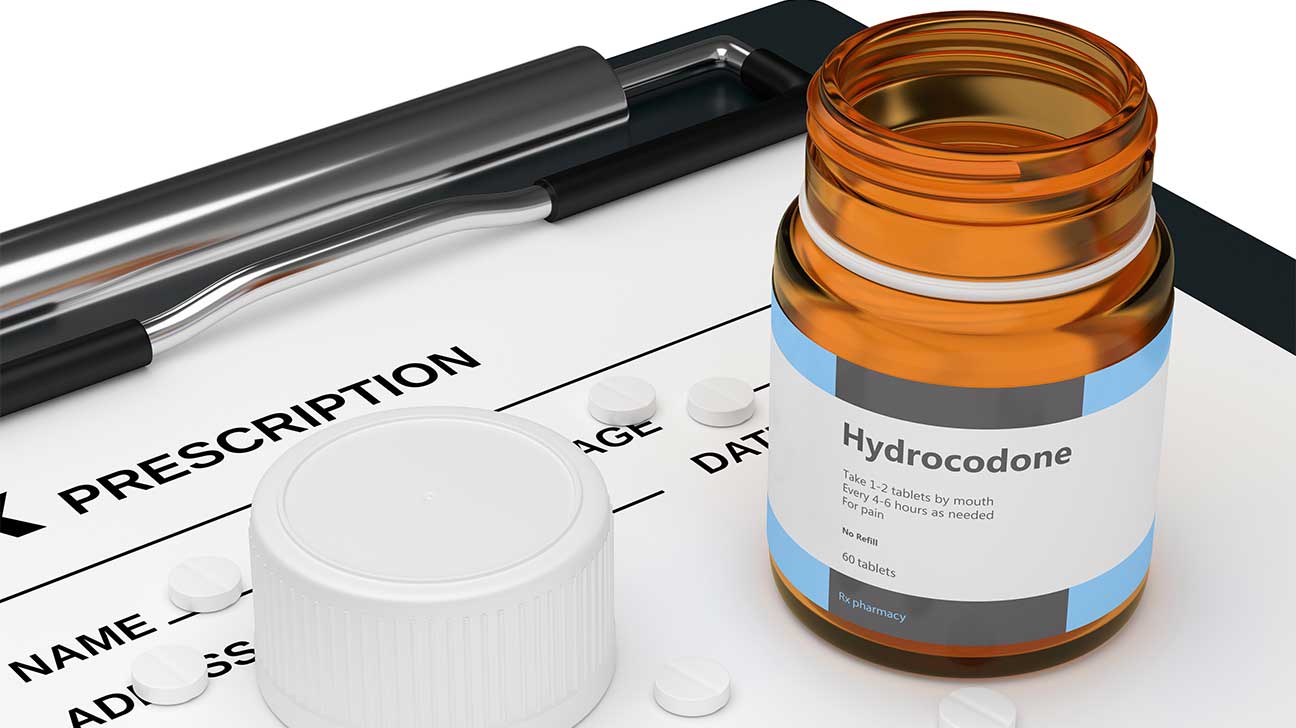Hydrocodone Vs. Oxycodone | Differences & Similarities
Hydrocodone and oxycodone are both prescription opioid medications that share similar side effects, dangers, and overdose symptoms. However, there are also a few differences in the intensity of certain side effects.

Hydrocodone and oxycodone are prescription opioid drugs used for pain management in those who suffer from moderate to severe pain as well as chronic pain. Either of these pain medications may be used by your healthcare representative to assist in pain relief.
As stated by the United States Drug Enforcement Administration (DEA), both opioid medications are Schedule II controlled substances, meaning they have a high potential for abuse which can result in psychological or physical dependence.
Both drugs target the central nervous system (CNS), binding to opioid receptors and blocking pain signals to your body.
Hydrocodone Vs. Oxycodone: Differences
There are minor differences between these two pain relievers. For instance, both create the side effects of constipation, but the effect can be more severe with oxycodone. Those taking hydrocodone may experience more drowsiness or tiredness than those who take oxycodone.
Brand Names
One of the major differences between hydrocodone and oxycodone prescription drug products are the brand names associated with the drugs. This helps you differentiate between the two.
Oxycodone is offered in several brand names such as OxyContin, Oxaydo, and Xtampza while hydrocodone is labeled with brand names such as Hysingla and Zohydro ER.
Hydrocodone Vs. Oxycodone: Similarities
Hydrocodone and oxycodone are both available in combination with other drugs, resulting in various brand names. For instance, Vicodin combines hydrocodone/acetaminophen while oxycodone combined with acetaminophen is known as Percocet.
Additionally, both opioids are typically prescribed for a short-term period of time due to their habit-forming potential.
Common Side Effects
Similar side effects of oxycodone and hydrocodone consist of:
- sedation
- dry mouth
- constipation
- drowsiness
- headache
- changes in mood
Withdrawal Symptoms
According to the National Institute on Drug Abuse (NIDA), withdrawal symptoms associated with opioids such as hydrocodone and oxycodone include:
- tremors in the arms or legs
- serious cravings for the drug
- diarrhea
- mental health issues such as anxiety
- vomiting
- difficulty sleeping
- cold flashes
- muscle pain
- stomach pain
Opioid Overdose
Those who participate in substance abuse by consuming large quantities of these painkillers may have an increased risk of overdose. Per the United States Food and Drug Administration (FDA), an oxycodone and hydrocodone overdose may have similarities such as:
- slowed heart rate
- low blood pressure
- clammy or cold skin
- restricted pupils
- respiratory distress
- muscle weakness
- coma
If an overdose is suspected, contact 911 immediately. Once at the hospital, healthcare professionals may administer naloxone (Narcan), a medication which may help to reverse the effects of an opioid overdose.
Opioid Addiction Treatment
If you struggle with prescription opioid abuse, consider finding treatment. Whether you participate in oxycodone or hydrocodone misuse, our treatment center provides you with numerous treatment plans which can be catered to your needs and situation.
To put an end to dangerous opioid use, contact us today for information on our medical detox, inpatient care, and other evidence-based practices.
Hydrocodone Vs. Oxycodone Frequently Asked Questions
Hydrocodone and oxycodone are similar medications that are both usually prescribed to treat pain that doesn’t respond to non-opioid pain medications. These frequently asked questions can help people better understand what differentiates these opioid agonists.
Which Is Stronger: Hydrocodone Or Oxycodone?
Oxycodone is a more potent opioid agonist, which means it is stronger than hydrocodone in the sense that a lower dose can be used to produce the same effect.
Why Is Hydrocodone So Frequently Abused?
There are many factors that could contribute to the frequency of hydrocodone abuse.
One factor is drug scheduling. Until October of 2014, hydrocodone was a Schedule III drug. This scheduling indicated that the risk of abuse was only moderate and allowed for a more lax prescription refill policy.
Hydrocodone is now a Schedule II drug like other opioids of its class, which may help to reduce hydrocodone addiction over the years.
- National Institutes of Health https://www.ncbi.nlm.nih.gov/pmc/articles/PMC9338763/
- National Institute on Drug Abuse https://nida.nih.gov/publications/drugfacts/prescription-opioids
- National Library of Medicine: MedlinePlus https://medlineplus.gov/druginfo/meds/a614045.html
- National Library of Medicine: MedlinePlus https://medlineplus.gov/ency/article/007285.htm
- National Library of Medicine: MedlinePlus https://medlineplus.gov/druginfo/meds/a682132.html

